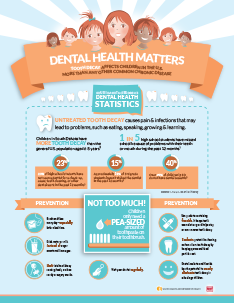Prepare Yourself For Unexpected Oral Emergencies By Being Able To Identify The Symptoms Of Trauma And Understanding The Ideal Time To Look For Immediate Clinical Interest
Prepare Yourself For Unexpected Oral Emergencies By Being Able To Identify The Symptoms Of Trauma And Understanding The Ideal Time To Look For Immediate Clinical Interest
Blog Article
Uploaded By-Vazquez Rivas
If you really feel an unexpected jolt of pain or discover a tooth injury, it can be disturbing. However just how do you figure out if it's an oral emergency situation that calls for instant attention? Comprehending the crucial signs and understanding when to look for assistance can make all the distinction in protecting your dental wellness. Understanding when to act quickly could suggest the difference between a quick fix and much more comprehensive treatment.
Common Kind Of Dental Trauma
What're the typical types of oral injury that you should recognize?
Mishaps can take place, bring about different types of oral injuries. One usual type of dental injury is a split tooth. This can happen from attacking down on something difficult or experiencing a blow to the face.
Another type is a damaged tooth, where a part of the tooth can chip off. In addition, you may experience a knocked-out tooth, which can happen throughout sports or drops. It's essential to deal with the tooth meticulously and seek instant oral focus.
Oral injury can also include a tooth that has been pushed out of placement or loosened up as a result of an injury. This sort of injury needs timely therapy to save the tooth.
Finally, https://www.prnewswire.com/news-releases/dr-vini-bhandari-shares-expert-tips-for-effective-teeth-whitening-at-home-and-at-the-dentists-office-301877956.html in the mouth, such as cuts, can likewise happen from mishaps. Knowing about these usual sorts of oral injury can assist you act quickly and appropriately in case of an emergency situation.
Signs of Oral Emergencies
Recognizing the indications of oral emergencies is essential for punctual activity and appropriate therapy. If you experience serious tooth pain that's constant and pain, it might show an underlying problem that calls for instant interest.
Swelling in the periodontals, face, or jaw can also signify an oral emergency situation, especially if it's accompanied by pain or fever. Any type of type of trauma to the mouth leading to a fractured, damaged, or knocked-out tooth ought to be dealt with as an emergency to prevent more damage and potential infection.
Hemorrhaging from the mouth that doesn't stop after using pressure for a few minutes is one more red flag that you must look for emergency dental care. Furthermore, if you observe any indicators of infection such as pus, a foul taste in your mouth, or a high temperature, it's essential to see a dental practitioner asap.
Disregarding these indicators can lead to extra severe complications, so it's essential to act quickly when faced with a possible dental emergency.
Significance of Immediate Therapy
Prompt activity and prompt treatment are critical in attending to dental emergencies to avoid further complications and guarantee optimal end results for your oral health and wellness.
When faced with a dental emergency situation, such as a knocked-out tooth or extreme tooth pain, seeking instant treatment can make a significant distinction in saving your tooth and easing pain. Delaying treatment can cause infection, increased pain, and even long-term damage to your teeth and periodontals.
By looking for emergency situation dental care quickly, you enhance the possibilities of effective treatment and restoration. https://are-veneers-covered-by-in17284.bloggerbags.com/35880438/5-strategies-for-finding-the-right-pediatric-dental-practitioner-for-your-kid have the essential skills and devices to address emergency situations effectively, lowering the risk of long-term effects.
Furthermore, immediate treatment can aid handle discomfort and pain, allowing you to resume your day-to-day activities without disturbance.
Final thought
In conclusion, recognizing oral injury and knowing when to seek emergency treatment is critical for maintaining dental health.
By identifying common sorts of oral injuries and the indicators of oral emergencies, you can guarantee punctual care to avoid additional damage and complications.
Bear in mind, seeking instant treatment can conserve teeth, reduce discomfort, and increase the possibilities of successful healing.
Don't hesitate to look for assistance from a dental professional if you experience any type of indicators of oral trauma.
